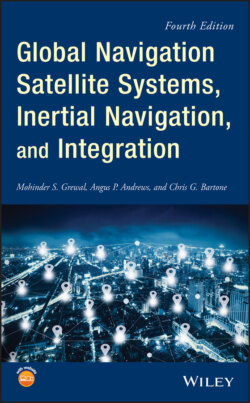Читать книгу Global Navigation Satellite Systems, Inertial Navigation, and Integration - Mohinder S. Grewal - Страница 93
3.3.3.3 Error Compensation
ОглавлениеThe accuracy demands on sensors used in inertial navigation cannot always be met within the tolerance limits of manufacturing, but can often be met by calibrating those errors after manufacture and using the results to compensate them during operation. Calibration is the process of characterizing the sensor output, given its input. Sensor error compensation is the process of determining the sensor input, given its output. Sensor design is all about making that process easier. Another problem is that any apparatus using physical phenomena that might be used to sense rotation or acceleration may also be sensitive to other phenomena, as well. Many sensors also function as thermometers, for example.
Figure 3.6 is a schematic of such an error compensation procedure, using the example of a gyroscope that is also sensitive to acceleration and temperature (not an unusual situation). The first problem is to determine the input–output function
where the ellipsis “” allows for the effects of more variables to be compensated. The functional characterization is usually done using a set of controlled input values and measured output values. The next problem is to determine its inverse,
and use it with independently sensed values for the variables involved – (sensor output), (compensated accelerometer output) and (temperature) in this example.
Figure 3.6 Gyro error compensation example.
If the input–output function is common to all sensors of the same design, then this only has to be done once. Otherwise, it can become expensive.
There are also methods using nonlinear Kalman filtering and auxiliary sensor aiding for tracking and updating compensation parameters that may drift over time.
